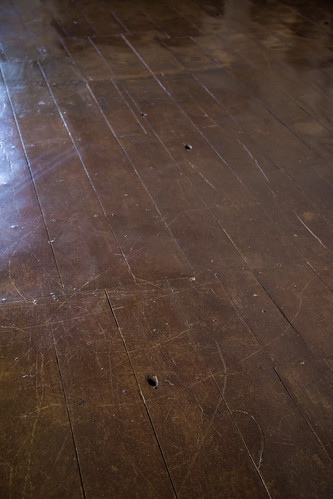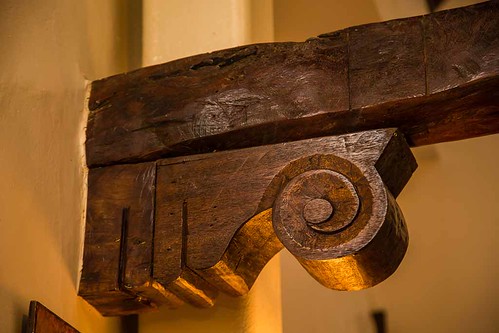Guam Trees: Ifit
Scientific name: Intsia bijuga
Ifit is the official territorial tree of Guam and is culturally important throughout the Mariana Islands. Ifit, also called ifil or ifel, belongs to the legume or pea family (Fabaceae) and subfamily Caesalpinoideae.
Ifit is indigenous from Madagascar to western Polynesia, and is native in tropical countries such as Australia, Cambodia, Commonwealth of the Northern Mariana Islands, Federated States of Micronesia, Fiji, Guam, Indonesia, Madagascar, Malaysia, Myanmar, Papua New Guinea, Republic of Palau, Samoa, Solomon Islands, Thailand, and Vietnam. The wood from the ifit tree is often referred to as merbau.
Naval assistant Governor of Guam and botanist William E. Safford described ifit in 1905 as being the most important tree species of Guam. The hard durable wood was used as posts and pillars in houses and churches. Ifit was also popular in constructing tables and chairs, as well as constructing wooden floors, often found in the better built houses.
Tree characteristics
Different authors describe ifit trees as being either medium or large trees. On Guam mature ifit trees are up to 25 m (75 feet) in height; however, large mature ifit trees are rare today. Botanist B. C. Stone described ifit in 1970 as having crooked trunks and lacking buttresses, and its bark as weathered grayish and glabrous (hairless).
Ifit’s species name, bijuga, is from the Latin “bi,” meaning two, and “jugatus” meaning yoked together in pairs, referring to the ifit’s leaves, which are light green and shiny. Ifit are even-pinnately, with leaves on either side the leaf stem (or rachis). The leaves are compound (meaning they have multiple leaflets). The leaflets alternate, with the rachis having one to two (rarely three) pairs of opposite, broadly elliptic, asymmetrical, coriaceous (leathery texture) leaflets about 3 to 4.5 cm long.
The pair of terminal leaflets at the end of the stem are distinctive and hanging. This asymmetrical leaflet pattern, with the pair of terminal leaflets, is an excellent characteristic for field identification of ifit. The light green leaf color is generally lighter than other forest tree species, which also aids in field identification. Although ifit trees are evergreen, they may lose their leaves periodically due to infestation of Insnesia glabrascuta, a psyllid (a type of insect pest) that is specific to Intsia (see pests below).
Ifit trees are bi-sexual, having both male and female flower parts. Inflorescence (the flower cluster) of ifit consist of many flowers that are distinctive, showy, moderately large with four greenish sepals, with the corolla reduced to one large petal. The petal is white with a red center, or sometimes pink or red. Flowers have three long red stamens (the male flower part) that are about 2.5 cm long. The fruit pod (the female part) is shaped as a typical legume and is a hard, woody, leathery, flattened and oblong structure, from 10 – 30 cm long. Fruit pods contain four to seven flattened brown seeds 2.5 – 3.5 cm in diameter with hard seed coats. Insects such as bees and wind are probably the major pollinators of ifit on Guam.
Physical environment
The ifit tree tolerates a wide range of environmental conditions. F.R. Fosberg associated ifit with mangroves, strand, and raised coral limestone vegetation types. On Guam, ifit is adapted to environments where the soil chemistry is neutral or has alkaline acidity (pH 6.1 – 7.4+). These plants can grow in light, medium, and heavy soils, and tolerate excessively drained soils with impeded drainage and seasonally waterlogged soils. The presence of ifit on the excessively drained, karst limestone soils indicates that the plant is also drought tolerant. Although ifit grows best in full sun, it is shade tolerant as well. While reported as having a high tolerance to salt spray, it is rarely found in environments that are frequently exposed to heavy salt spray.
Plant associations
There is no standard vegetation classification system for Guam’s plant communities. Many authors refer to the Fosberg 1960 classification scheme for vegetation in Micronesia. Fosberg included Intsia with most common trees on inland areas of elevated limestone, such as Ficus, Pandanus, Artocarpus, Elaeocarpus, Aglaia, Fagraea, Pipturus, Cycas, Claoxylon, Boerlagiodendron, Laportea, Eugenia, Premma, Guamia, Hernadia, Pouteria, Erythrina, Randia, Melanolepis, Cynometra, Semecarpus, Meryta, Pongamia, and Dracaena. Stone, in 1970, included Intsia in his Type 1 Forest of elevated Hard Limestones – the “Typhoon Forest” classification– which he adopted from Fosberg.
Prior to World War II the limestone forests in the northern half of Guam were largely undisturbed. Safford reported in 1905 that ifit was becoming scarce in the vicinity of Hagåtña, however it was abundant in the forests of the northern part of Guam. Today, ifit is considered rare because of habitat modification (e.g., land clearing), over harvesting of mature ifit trees, and seedling browsing by non-native feral ungulates, such as pigs (Sus scofa) and Philippine deer (Cervus mariannus).
Few studies have quantified Guam’s forest structure. Gad and Morton (1999) examined forested plots in the Northwest Field area of Andersen Air Force Base, and Morton (2000) described primary, native limestone forest as including Aglaia (mapuneau), Cycas (fadang), Ficus (nunu), Guamia (pai), and Neisosperma (fago) species. Although Intsia is mentioned as being a typical primary, native limestone species, it was extremely rare in the survey plot.
Forest inventories
USDA Forest Service (USFS) completed a forest inventory of Guam in 2002 and estimated that limestone forest occupy 18,098 ha of the total island’s area of 54,923 ha, or 33 percent of Guam’s land area. The USFS estimated that 72,452 ifit trees were on Guam, or four ifit trees per hectare if distributed evenly over the limestone forest. The USFS report estimated 40 percent of the ifit trees were between 12 and 22 cm diameter breast height (dbh at 1.2 m above ground level), while the remaining 60 percent of ifit trees were between 38 – 43 cm dbh. Intsia accounted for less than one percent of total estimated trees greater than 12 cm dbh on Guam.
In 2008 the Department of Defense (DoD) funded vegetation studies on nine survey areas on DoD and certain non-DoD properties in support of the Guam Buildup Environmental Impact Statement. Ifit was present on six of the nine survey areas with a mean diameter at breast height (1.2 m) of only 15 cm, which is quite small for a tree that was once harvested for its size and utilized for construction.
Pests and threats
Feral ungulates (pigs and Philippine deer) are known to browse ifit seedlings preventing successful regeneration of ifit seedlings in the wild or survival of planted ifit in the forest understory.
The most documented serious threat to ifit on Guam, though, is the psyllid, Insnesia glabrascuta. Psyllids, also known as jumping plant lice, are small insects that feed plant parts and very host specific. Insnesia is a serious pest to ifit because it feeds on new leaves, stems, and flowers resulting in trees becoming defoliated and unable to flower. The University of Guam, however, has been experimenting with a variety of pesticides to treat psyllids on on ifit trees.
Ifit uses
Before World War II, when large mature ifit trees were still in abundance, it was primarily utilized in home construction supporting poles, flooring, rafters, etc., and the construction of furniture such as chairs, benches, and tables. Today, under Guam law it is illegal to cut live ifit trees although poaching of mature ifit trees still occurs. Ifit, however, is still the most popular wood for local carvers on Guam.
For further reading
Elevitch, Craig R., ed. Traditional Trees of Pacific Islands: Their Culture, Environment, and Use. Hōlualoa: Permanent Agriculture Resources, 2006.
Fosberg, Francis R. The Vegetation of Micronesia. Vol. 119 of Bulletin of the American Museum of Natural History. New York: American Museum of Natural History, 1960.
Marler, Thomas E., and John H. Lawrence. Ifit: Intsia bijuga, The Territorial Tree of Guam. Mangilao: Guam Department of Agriculture Forestry and Soil Resources Division, 1994.
Miller, Ross. H. “Developing Insecticide Management for Insnesia glabrascuta (Caldwell) (Homoptera: Psyllidae) on Young Ifit Trees on Guam.” Micronesica 37, no. 1 (2004): 37-48.
Morton, John M., Fred A. Amidon, and Lena R. Quinata. “Structure of a Limestone Forest on Northern Guam.” Micronesica 32, no. 2 (2000): 229-244.
Perry, Gad, and John M. Morton. “Regeneration Rates of the Woody Vegetation of Guam’s Northwest Field Following Major Disturbance: Land Use Patterns, Feral Ungulates, and Cascading Effects of the Brown Treesnake.” Micronesica 32, no. 1 (1999): 125-142.
Safford, William E. The Useful Plants of the Island of Guam. Washington, DC: Government Printing Office, 1905.
Stone, Benjamin C. “The Flora of Guam. A Manual for the Identification of the Vascular Plants of the Island.” Micronesica 6, nos. 1-2 (1970): 1-659.
Thaman, Randolph R., Lex A.J. Thomson, Robin DeMeo, Francis Areki, and Craig R. Elevitch. “Intsia bijuga (vesi).” Ver. 3.1. Species Profiles for Pacific Island Agroforestry. Hōlualoa: Permanent Agriculture Resources (PAR), 2006.
US Department of Agriculture Forest Service. Guam’s Forest Resources, 2002. By Joseph A. Donnegan, Sarah L. Butler, Walter Grabowiecki, Bruce A. Hiserote, and David Limtiaco. Resource Bulletin PNW-RB-243. Portland: PNW, 2004.
US Department of Defense Legacy Program. Protecting Guam’s Cultural and Biological Resource – The Ifit Tree. By Thomas E. Marler. Mangilao: UOG, 1996.
US Department of the Navy Naval Facilities Engineering Command, Pacific. Natural Resource Survey Report in Support of the Environmental Impact Statement for the Marine Corps Relocation Initiative to Various Locations on Guam. Pearl Harbor: NAVFAC, 2010.
World Agroforestry Centre. Transforming Lives and Landscapes with Trees.


